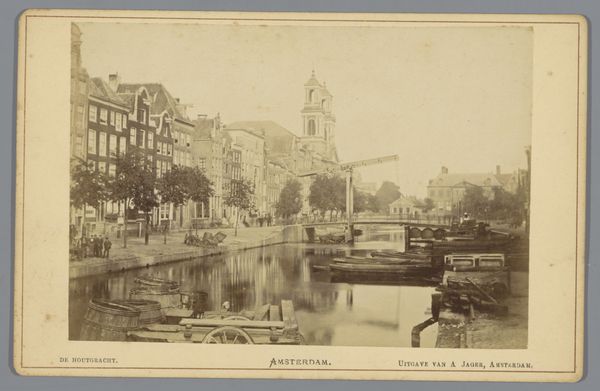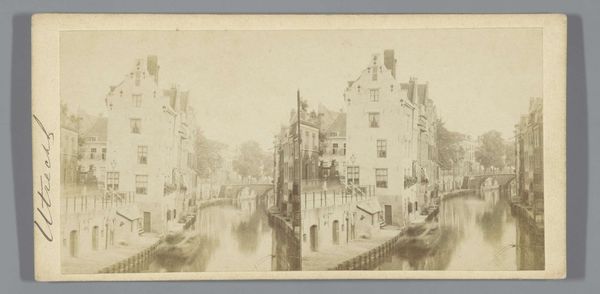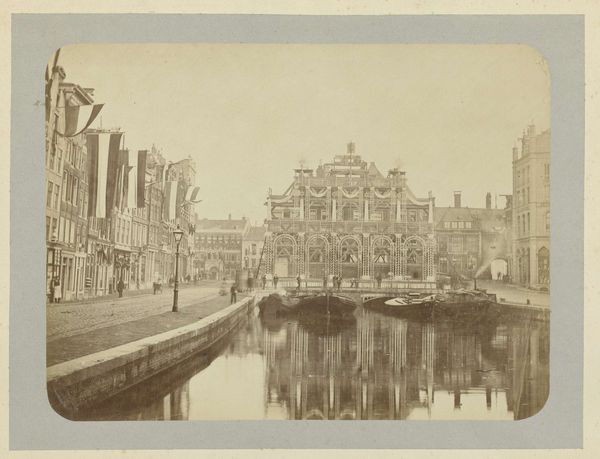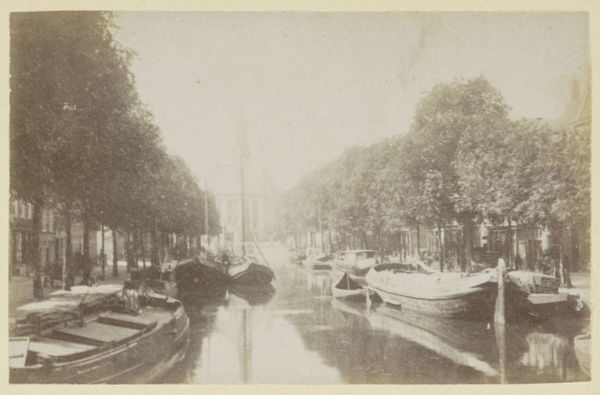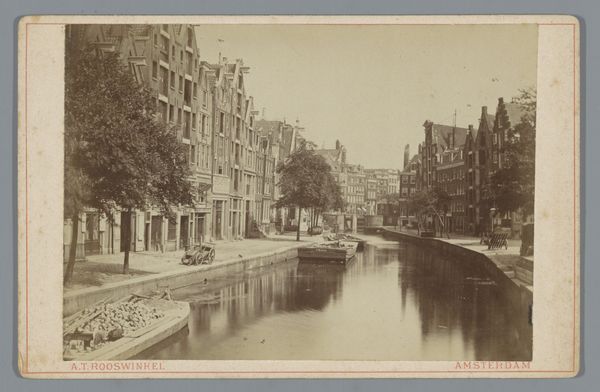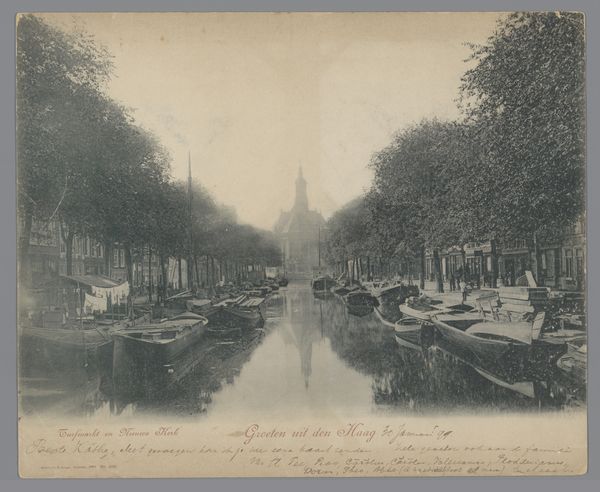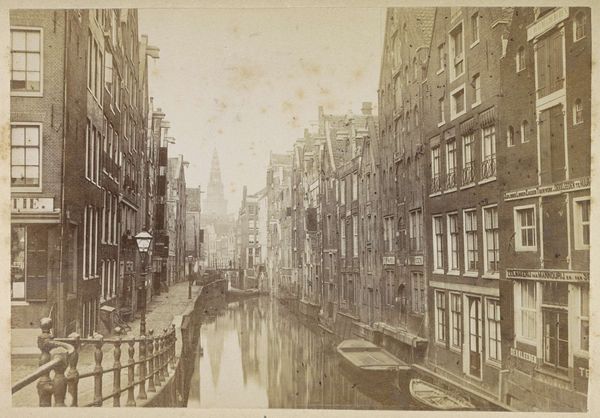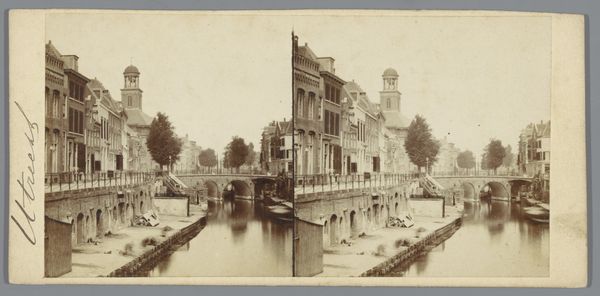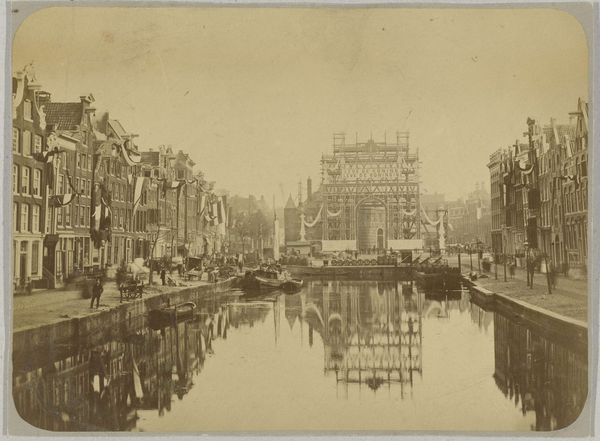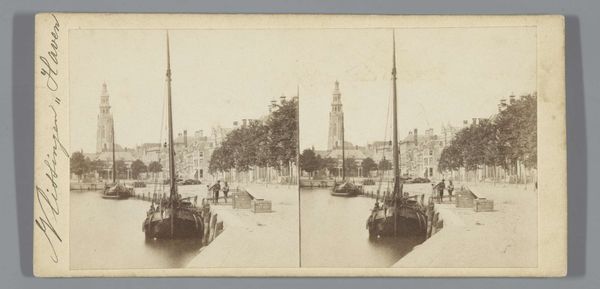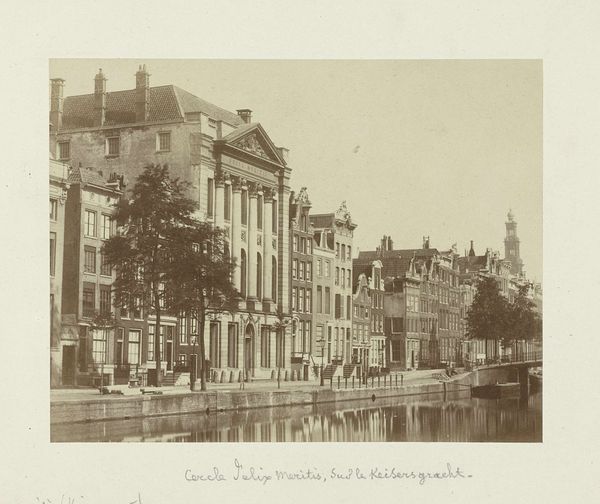
Gezicht over de Oude Gracht te Utrecht, met de Domtoren op de achtergrond 1892
0:00
0:00
photography
#
pictorialism
#
landscape
#
photography
#
cityscape
Dimensions: height 81 mm, width 110 mm, height 94 mm, width 115 mm
Copyright: Rijks Museum: Open Domain
Curator: This is "View Over the Oude Gracht in Utrecht, with the Dom Tower in the Background," taken in 1892 by Henry Pauw van Wieldrecht. Editor: It's immediately striking, almost dreamlike. The tones are soft, muted, and the tower looms in the distance like a medieval fantasy. I am drawn to its somber stillness. Curator: It’s an excellent example of Pictorialism, where photographers sought to have their work considered art rather than mere documentation. They employed techniques like soft focus and manipulated printing processes. The artist embraced soft focus to capture an emotional state and give atmospheric conditions for this cityscape, instead of crisp lines and realistic light. Editor: Exactly, it distances itself from straightforward representation. This treatment suggests the artist’s feeling about industrial progress in urban spaces. Did he intentionally create that contrast, that dialectic between the old architectural and the social reality? How does this photograph challenge traditional views of progress and urban identity at the turn of the century? Curator: The tower was, and is, an iconic landmark of Utrecht. Van Wieldrecht's decision to feature it likely wasn’t inherently critical, but it was intended to show off the pride the citizens of Utrecht have of their community, and he uses atmospheric techniques in printing the photograph. This allowed for artistry to shine through and for these photographs to enter art spaces in museums, rather than being seen as journalistic documentation. It was a challenge to the conventional art world. Editor: A political statement by implication? Perhaps that’s reading too much into it, but it's difficult to see art created during transformative periods as simply aesthetic exercises. Curator: His intentions, his agency is difficult to gauge here, for certain. But he certainly succeeds at taking photography in a new direction. This allowed a venue for photography to be seen in exhibition. This new conceptualization allowed different members of society who would not have typically been welcome into art institutions a place to flourish, making the field more accessible. Editor: So, in the end, perhaps an optimistic kind of progress. Viewing this, I feel more aligned to considering history and the relationship of place, space and society. Thank you. Curator: My pleasure, it is a reminder of the evolving definitions and acceptance within art history and society.
Comments
No comments
Be the first to comment and join the conversation on the ultimate creative platform.
